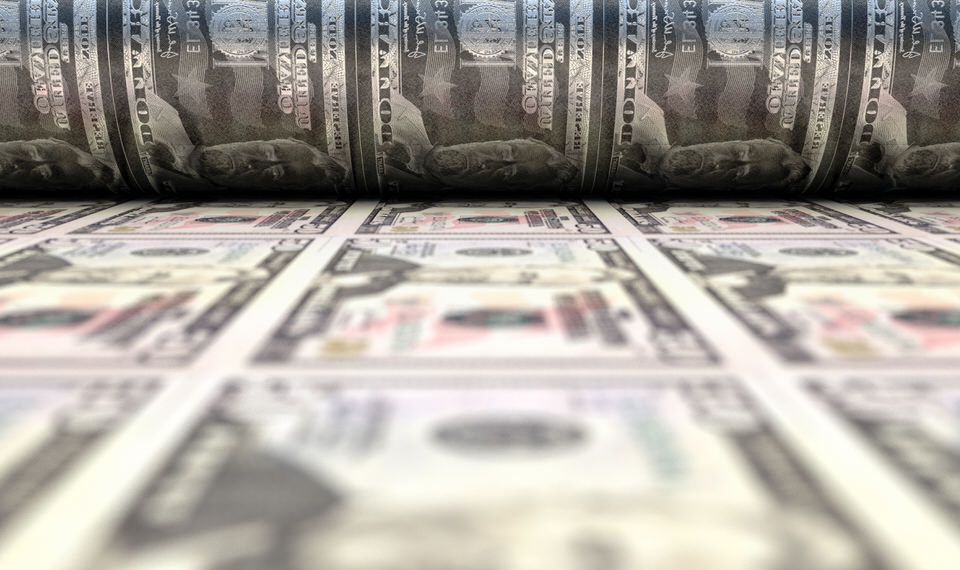by Hubert Marleau, Market Economist, Palos Management
The stock market made good gains in the earlier part of the week as macroeconomic prints continued to show that the economy was recovering, albeit at a slower pace. The Citi Economic Surprise index showed data coming ahead of expectations. The week was marked with rising retail sales, industrial production, consumer sentiment and leading economic indicators. The Atlanta Fed’s GDPNow model (saar) estimate for GDP growth in the 3rd quarter of 2020 ticked up again this week to 32.0%. On July 27, the estimate was only 12%. The September zeitgeist as revealed by the latest edition of BofA’s Global Fund Manager survey, showed that 58% of respondents believed that we are currently in a bull market compared to only 25% in May, 37% in June, 40% in July, and 46% in August. While the survey suggests that the economy has not escaped velocity, it insisted that the economy was in an early-cycle phase.
Moreover, the respondents believed that the upward trajectory of the market rested on a 10% rise in corporate earnings over the next twelve months. That expectation is clearly locked in. As matter of fact, corporate profits could be much larger than what the survey expects. The bullish internals of the ISM numbers and price indices suggest that the profitability of many companies could easily beat estimates.
Nevertheless, the market was unable to keep it’s early gains because speculators wanted more feed than the Fed was willing to give and traders feared the coming of the so-called “quadruple witching day”.
Firstly, the Fed never seems to give enough to satisfy the cohort of prickly speculators—unless they're given a fresh bone to chew on. In their judgement, the monetary authorities did not give specifics on what exactly “average inflation” means and were too reticent on what ought to be the composition of their asset purchases. Secondly, it’s not unusual to have high doses of volatility when the “quadruple witching day” is approaching. Traders don't like choppy sessions. The “quadruple witching day” occurs on the twelfth Friday of every quarter when both futures and options are linked to individual stocks and to stock indices expiring simultaneously. On Friday, the S&P 500 gave back all its earlier gains and some, capping a weekly loss of 0.7%.
To be sure, the Fed was clearly dovish, definitely leaning into the recovery. Barring an exogenous shock or a major fiscal policy error, the Fed telegraphed the maintenance of near zero interest rates over the the next three years, the $120 billion/month asset-buying program, the Main Street Lending Facility and the powerfully strong forward guidance, should be enough to bring the pace of economy to a two-plus-two scenario by 2023---that is two for growth and two for inflation with a 4.0% unemployment rate.
Investors should note that last week's FOMC meeting was the first one since Chairman Powell announced the Fed’s new inflation policy framework at the Jackson Hole symposium and the last one before the U.S. Presidential election. In this respect, it may have been too much to expect the Fed to be more explicit, reserving details for the November 4-5 FOMC meeting. Powell is probably sensing that the more dovish the Fed is, the less likely Washington will agree on a new spending package. I believe that his intent was to surreptitiously transfer the responsibility of the last mile to Congress and/or to outrightly blame the lawmakers for failing to bring an appropriate relief program. Trump was quick to escape accusations. The White House signalled that it would be willing to back a $1.5tn stimulus proposal unveiled by moderates.
The big question is whether it’s credible that the Fed can actually manufacture a full recovery that will bring about the desired outcome of maximum employment in 2023 by averaging the inflation rate around 2.0% and, in turn, by validating current valuations. The short answer is yes.
The money supply is up 23% from last year. In the fullness of time, the path of the economy follows that of the money supply adjusted for it’s turnover. The more transactional money is, the greater is the propensity that money velocity will eventually rise. For example, M1 which has a narrower definition and more transactional than M2 is up 40% year-over-year. Since February, M1 accounts for 47% of the increase in M2–an historical record. On average the ratio is 25%. Thus, the potential that the money which was created since the onset of the pandemic could turnover faster in the future than it has, is real. Meanwhile, the Fed will continue to monetize the federal budgetary deficit to the tune of $80 billion a month and the $1.6 trillion inert cash balances of the Treasury General Account will gradually be deployed in both the economy and financial system. These activities should further boost monetary growth. In 45 days, Americans will go to the polls. In this regard, the Treasury is accelerating government spending into the election. Interestingly, the U.S. M2 money supply grew by $112.2bn in the week that ended on the 7th of September.
INVESTORS SHOULD TAKE NOTE THAT THERE IS ALSO A CLOSE CONNECTION BETWEEN THE M2-MONEY SUPPLY ($18576tn) AND THE S&P 500 (3319), PARTICULARLY WHEN REAL INTEREST RATES ARE NEGATIVE LIKE THEY ARE TODAY. ON FRIDAY THE RATIO WAS 5.6 TIMES. A RATIO OF 4.8 TIMES WOULD
CLOSELY RESPECT HISTORICAL NORMS. IT MEANS THAT THE S&P 500 COULD RUN UP TO 3800. I CAN SEE WHY SEVERAL MARKET STRATEGISTS ARE FULLY INVESTED IN EQUITIES BUT HAVE BALLASTED THEIR PORTFOLIO WITH A BIT OF CASH AND/OR A FEW VIX CONTRACTS RATHER THAN BONDS. BEAR IN MIND THAT THE PURPORTED PROXIMITY OF A CORONAVIRUS VACCINE COULD MAKE THE ROTATION TO VALUE THE REAL DEAL.
Copyright © Palos Management














